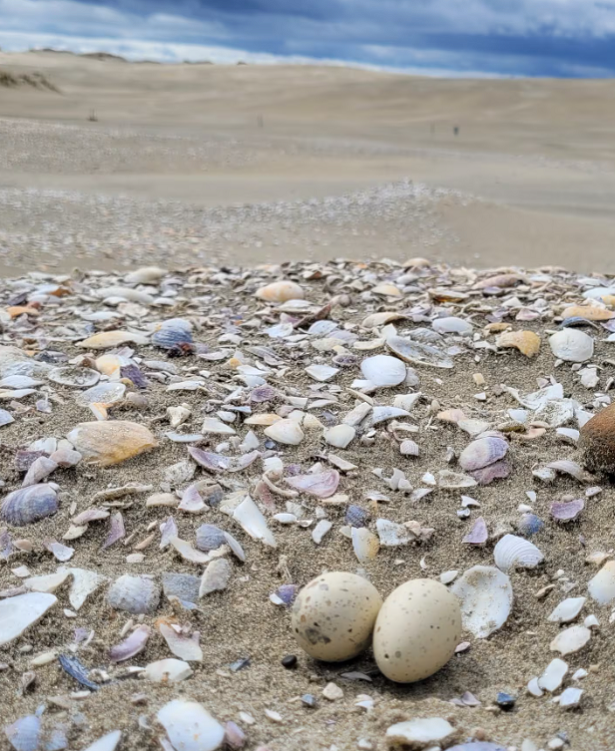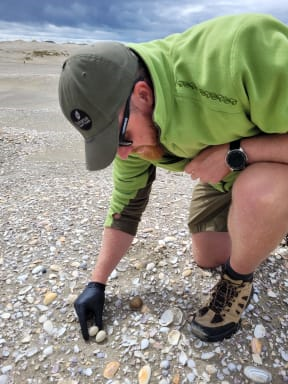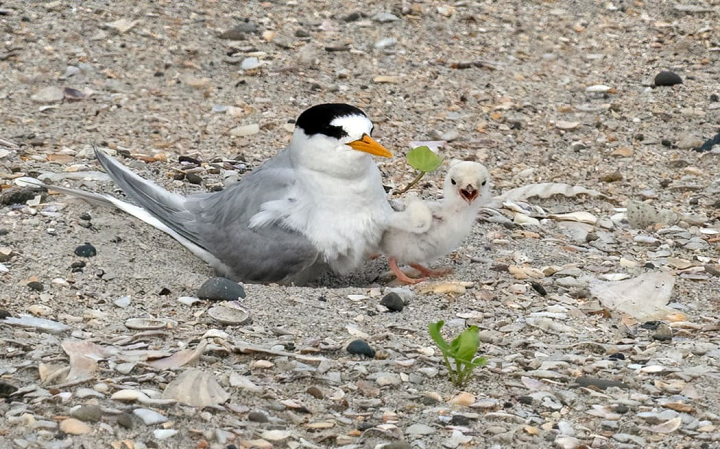In honor of Easter Sunday today, we’re bringing you a special story about 3D printed eggs, but this isn’t your typical Easter Egg piece. The Department of Conservation (DOC) in New Zealand is using 3D printing to help protect the eggs of the extremely endangered fairy tern, or tara iti. According to the ZSL institute of Zoology, this magical-sounding creature is New Zealand’s rarest indigenous breeding bird, with only nine breeding pairs left and just a few remaining breeding sites. 3D printing is often used as a wildlife conservation tool, and the DOC turned to it in this instance to keep the eggs safe during high-risk periods like storms and high tides, thus helping to ensure the survival of the species.
The once-widespread fairy tern is a small coastal bird, preferring to lay its eggs on sandy beaches with little protective vegetation. There are just five main breeding sites in Auckland: Papakānui Spit, Pākiri Beach, Waipū and Mangawhai sandspits, and Te Ārai Stream mouth. Because they nest on the ground, and not high up in the trees, these little birds are even more vulnerable to threats. Storms and high tides, along with coastal development, degrade and shrink its nesting area, and small animals, like cats and hedgehogs, can easily make a meal out of the tara iti. The DOC began conservation management for the bird many years ago, with rangers and volunteers carrying out tasks like hanging signs to protect nests, trapping predators, preventing disturbances near the nesting sites, and, most recently, managing their eggs.
During high-risk periods, DOC staff takes eggs from the fairy tern nests and puts them in incubators at the Auckland Zoo. The real eggs are replaced with fake ones, so the birds still have something to incubate themselves. Hand-painted wooden eggs were used at first, and then real eggs with wax inside the hollow center. But last year, the DOC received funding from the Endangered Species Foundation (ESF) – Tāngaro Tuia te Ora to improve their egg replica methods.
“DOC is really lucky to have the support of ESF to produce these 3D eggs which are a crucial management tool used to save tara iti,” said Ayla Wiles, DOC Biodiversity Ranger, Whangārei. “They allow us to improve productivity and save nests without losing real eggs in the process.”

Two 3D printed replica eggs hold a tara iti/NZ fairy tern nest at Mangawhai – one of just five sites where the critically endangered shore birds now breed. Photo: DOC
With the improved funding, the DOC commissioned Auckland-based designer, illustrator, and photographer Shaun Lee to create 3D printed replica eggs, designed to match the real ones in size, color, texture, shape, weight, and UV resistance; the replicas were hand-painted by artist and marine biologist Carina Sim-Smith. Lee is very focused on restoration, conservation, and pollution prevention, and back in 2018 made several 3D printed tara iti decoys “as a tool for conservation, education and advocacy.” He’s also 3D printed replicas of these rare birds for the Mangawhai Museum.
“As there are only 40 of these birds left in the world they were never going to be able to get a taxidermy one for an exhibition,” Lee explained at the time.
The DOC reports that the 3D printed fairy tern eggs are so similar to the real ones that the birds don’t even know that they’ve been swapped. Plus, the replicas are clearly working, as the initiative reported a record-breaking breeding season with 22 eggs laid, and 14 chicks hatched.

Ranger Harry Haywood putting 3D printed replica eggs into a tara iti nest. Photo: DOC / Shannah Courtenay
“It’s been so heartening this year to see the progress DOC, volunteers, community groups and Auckland Zoo have made to boost numbers of the tara iti,” said Natalie Jessup, General Manager of ESF. “We were happy to see the replacement eggs were successful at holding nesting sites during risky periods when the real eggs were safely cared for at Auckland Zoo – they were so realistic parent birds had no idea they were not sitting on the real thing.”
Conservation efforts like these are one of my favorite uses of 3D printing; I love seeing how the technology can be used to make the world a better place by helping its animals.

Fairy tern / tara iti egg (L) and 3D printed dummy egg (R) used in the nest protection program. Photo: Supplied / DOC
If you were still hoping for some 3D printed Easter Eggs, check out this beautiful Lattice Easter Egg by Thingiverse user dazus!
Subscribe to Our Email Newsletter
Stay up-to-date on all the latest news from the 3D printing industry and receive information and offers from third party vendors.
You May Also Like
3D Printing News Briefs, April 27, 2024: Research, Digital Dentistry, Cycling, & More
We’re starting today’s 3D Printing News Briefs with some research into 3D printed luminescent quantum-dot polymer architectures and free-form laser beam shaping, and then on to an open source 4-axis...
HP & INDO-MIM Collaborate to Boost Metal 3D Printing in India
HP Inc. and INDO-MIM, a US- and India-based supplier of metal injection molding (MIM) powders and contract manufacturer, have announced that the two companies will collaborate to accelerate additive manufacturing...
3D Printing News Briefs, February 17, 2024: Shot Blasting, Service Bureaus, & More
In today’s 3D Printing News Briefs, we’re starting out with post-processing, as SKZ Würzburg is using a shot blast system from AM Solutions for its research. Moving on to business,...
3D Printing News Unpeeled: Not That Kind of Organ 3D Printing
GKN Aerospace will create a 150 jobs in Trollhattan Sweden with an investment of $60 million part of which comes from the Swedish Energy Agency’s Industriklivet initiative. The investment will...































